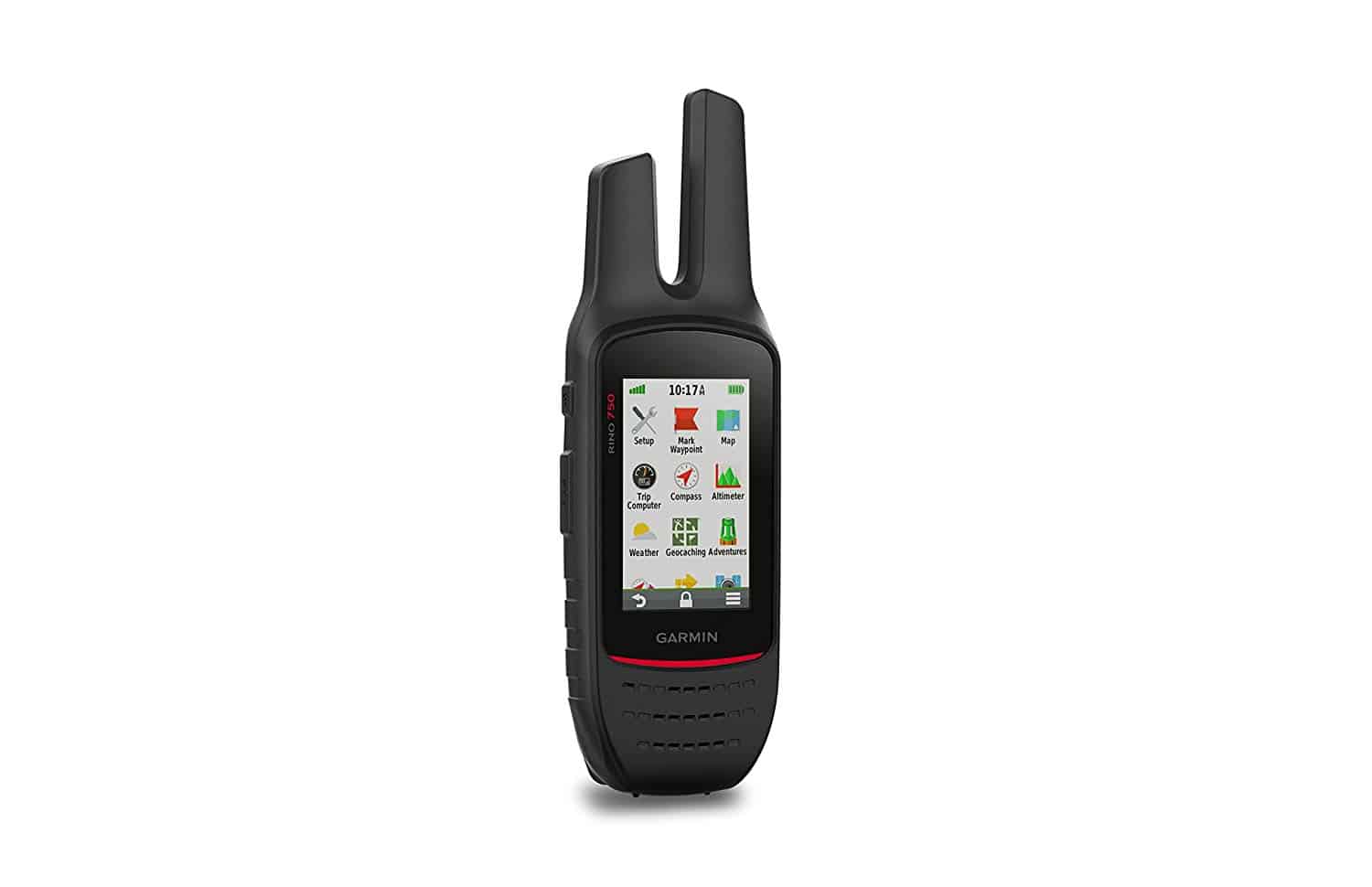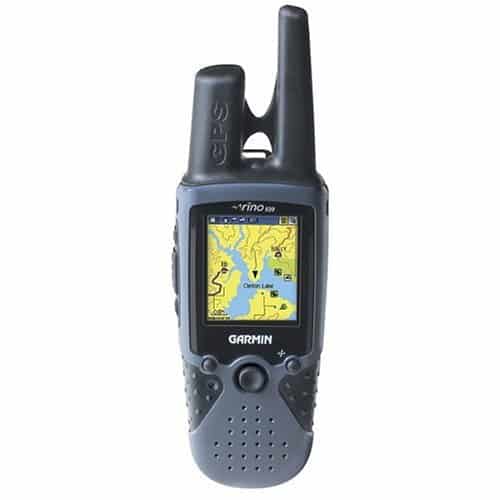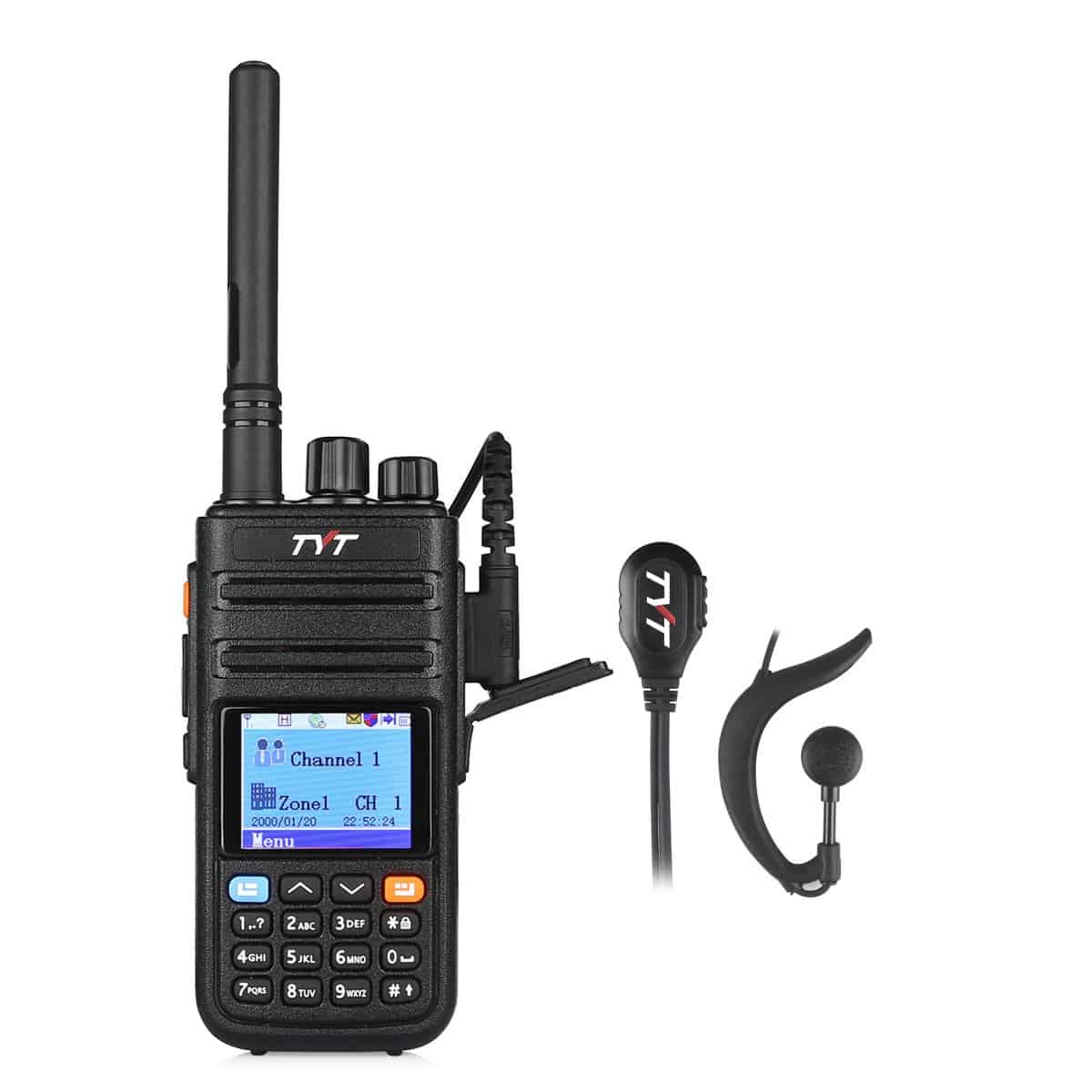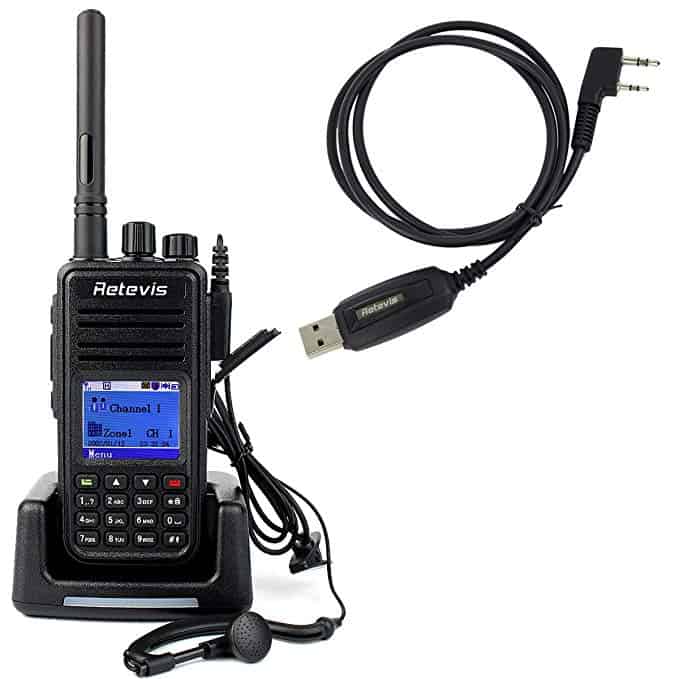Best Hunting GPS Radio of 2021 (Reviews & Guide)
Our experts like to share product recommendations with you and hope you like them! Just to make you aware, CatchThemEasy may collect a small share of sales or other compensation from the links on this page.

If you do decide to go out into the woods to play, then you should be taking your safety very seriously. Hunts can sometimes lead to unexpected safety issues such as poor weather conditions, coming face-to-face with a grizzly or even getting lost.
As well as having a plan of action and letting people know where you’re off to, you can purchase equipment to help combat any of these issues if they arise. One sure way to ensure your safety is by having a radio to communicate with. Though you may have a radio to communicate with if you do get lost, what do you respond with if someone wants to know how to get to you?
That’s where a radio with GPS features comes in handy, and gives you a little more peace of mind if you do have to call for help in the event of getting lost. Below we’ve selected the 5 best hunting GPS radios for you to choose from.
Top 5 Rated Models Comparison Table
Image | GPS Radio | Range | GPS | Price |
|---|---|---|---|---|
Editors Choice | 20 miles *extended | GLONASS, GPS | ||
2 miles | WAAS-enabled | |||
1-2 miles | GPS Emergency Function | |||
1-2 miles | None | |||
1-2 miles | WAAS-Enabled GPS |
Reviews of the Best Hunting GPS Radios
The Rino 750 is a top-of-the-line GPS radio from Garmin, well-known in the GPS world. The Rino boasts a 3-inch touchscreen display that is designed to be read in bright sunlight, as well as in both landscape and portrait mode, and lets you choose functions easily and intuitively. The 5W FRS/GMRS radio has an extended range of up to 20 miles, letting you communicate with audio and also through text message if you prefer. The GPS is also capable of GLONASS satellite reception, and there are over 1000k downloaded TOPO maps you can download and access offline.
In addition to the main features - GPS and 2-way radio – the Rino 750 also features a 3-axis tilt-compensated compass, accelerometer and barometric altimeter, making it an all-in-one navigation device that lets you navigate bravely in almost any situation and in any terrain. It even receives active weather forecasts on an animated weather radar. You can Geotag pictures you’ve taken, it charges from USB, and the battery can last up to 18 hours. It’s a premium, all-in-one device.
One complaint we do have is that the touchscreen and software are a bit slow and clunky – kind of like using a very old smartphone or GPS. We would love to see a faster, more up-to-date firmware and touchscreen installed in the future.
Otherwise, we love this GPS Radio from Garmin. It’s an excellent device with all the features you need, all the range you could want, and it’s built to last. It’s our Top Pick for a GPS Radio for Hunting.
Pros
- Tons of features - Compass, barometer, accelerometer, GPS, GLONASS
- 2-Way FRS/GMRS radio + text messaging
- 20-mile extended range
- 100k preloaded TOPO Maps
- Touchscreen Display
- Smart notifications
Cons
- Touchscreen is outdated a little
Verdict: Best Overall
The Garmin Rino is a 2-way, 22-channel FRS and GMRS handheld radio with a range of 2 miles. It also boasts a WAAS-enabled GPS with 12-channels, and downloads maps straight onto the device, where they can be stored offline and accessed without going online. A Position Reporting feature lets you beam your location to any other Rino user within a 2-mile range.
Furthermore, the Rino 120 is waterproof, with an impact-resistant, rugged body that is built to last through all kinds of outdoor adventures. You also get the choice of 38 different sub-audible squelch codes to pair with your channel, giving you the choice of semi-private conversation that others cannot listen in on.
A common drawback to combined radio and GPS, however, is that often, neither one is as capable as they would be on their own, and the Garmin Rino is a good example of this. The 2-mile range is okay, but could be a lot better, and tends to cut out long before that when used in very heavy terrain (hills, woods). The microphone is also lacking; it is not very sensitive, and you may need to shout into it to be heard on the other end.
Otherwise, The Rino 12 provides an all-in-one solution for a GPS and radio in one device, with a waterproof, durable body built for heavy-use, and host of helpful features to keep you connected.
Pros
- Waterproof, tough body
- 22-channels
- 12-channel, WAAS-enabled GPS
- 38 sub-audible squelch codes for private listening
Cons
- Doesn’t get full 2-mile range in woods, mountains
- Microphone could be better, more sensitive
The TYT Tytera is a much less-expensive GPS radio than the Garmin models above. It has a 400-480mhz two-way, VHF radio capable of over 1000 different channels, as well as digital mode, which allows text messages and other functions such as private call and group call - so you can talk without others listening in. There’s even Remote/Kill/Stun. It’s a versatile radio with a bunch of different useful features.
The Tytera has a GPS function that can help you locate yourself in an emergency and send out an emergency beacon for responders to pick up.
The GPS does not, however, include any kind of map, like the Garmin GPS’s do. It cannot show you where you are and is not useful for navigation; it’s just there for getting help in emergencies. The radio itself also feels a bit flimsy and breaks easily. That’s frustrating. Furthermore, the range is kind of poor.
It’s a great option if you’re on a budget, but if you can afford a bit more, you’ll probably want to invest in a more durable radio, with better range and a full GPS map.
Pros
- 1000 channels VHF
- Digital Call Mode
- Remote/Kill/Stun. Text messages
- Private Call
- GPS Function for emergencies
Cons
- No Maps
- Flimsy build
- Bad range
Another budget buy, the Retevis RT3 is much like the TYT Tytera: it has 400-480mhz UHF radio, with both digital and analog modes. Digital mode contains features as priority scan; noise suppression; digital voice clarity, text messages, group call, emergency call – among many others -and is compatible with Mototrbo Tier I&II and digital protocol ETSI TS 102 361-1;-2;-3.
Analog radio hits over 1000 channels, and there’s a Color LCD and Icon display that allows you to see everything you’re doing, rather than just fiddling with buttons.
There are few problems and bugs with the software that many users have pointed out, saying it helps to be handy with software and tinkering with radio frequencies. If that’s not you, you might want to look at a different radio.
Otherwise, this is an awesome radio with all the features you could need on a budget. It’s not as hardcore as some of the others and lacks the GPS capability, but is otherwise a powerful, capable radio.
Pros
- Powerful, 400-480mhz
- Digital and Analog
- Over 1000 channels
- Tons of features; encryption; noise suppression; group call. Etc.
Cons
- No GPS Capability
- Software is buggy; needs troubleshooting
The Standard Horizon HX870 is an excellent mid-range radio with GPS. It puts out a sold 5W of power on VHF and features a wide array of features: 10 preset favorite channels, 16 channel distress call, an integrated 70-channel DSC and 66-channel WAAS GPS, and a group monitoring feature. The DSC allows you to send pre-formatted messages in times of distress, but it is meant for maritime use.
Perhaps the best part of this radio, however, is the IPX8-rated waterproof build. You can drop it into water – accidentally, of course – without any kind of damage, and it can be submerged in 1.5 meters of water for up to 20 minutes. Very useful! It also has noise-canceling for transmitting and receiving audio, a water-activated emergency strobe, and comes with a 7.4V 1.8amp Li-Ion battery.
All that said, it’s weak on power and short on range. It puts out 5W, but lacks at good reception – especially in rugged, wooded or mountainous conditions.
However, for the price, it’s still the best option for a good VHF radio paired with GPS, if you can’t afford the high-end Garmin Rino 750. If it had better reception, we’d be more likely to recommend it wholeheartedly.
Pros
- 16-channel WAAS GPS
- 7-Channel, Integrated DSC
- 16-chanel distress call
- IPX8 Waterproof! Durable
- Water-activated strobe
- Noise-canceling during transmission
Cons
- Bad reception
- Poor range
What Makes A Good GPS Radio for Hunting?
Radio System + Channels
There are several different radio frequency ranges or services you will come across when looking for a good GPS radio, such as FRS, GMRS, UHF, VHF, to name the most common. FRS stands for Family Radio Service and is a radio service specifically created for consumers who don’t need professional radios. It’s the easiest to find and usually makes for the most affordable radios, the downside being they are also the weakest and offer the least power and most limited range.
VHF and UHF radios are more powerful, offer greater range and more reliable reception in rugged terrain – but they are accordingly more expensive. They operate on 30Mhz to 300Mhz and 300Mhz to 3Ghz frequency range, respectively. Also, they generally require a license to operate on all frequencies.
The exact service and frequency you decide to go with is important, but really depends on how much power you need and whether it can cover the distances you plan on using, as well as one that works with the other radios you plan on communicating with.
Range
Effective range is important and goes hand in hand with choosing your radio system or frequency range. FRS radios sometimes advertise up to 10 to 30 miles of good signal, but they rarely get that; those numbers are based on “ideal” conditions, meaning a clear line of sight with no obstacles, such as from one mountain peak to another mountain peak a few miles away. Trees, heavy foliage, mountains and hills; all these can affect a radio’s range, and you likely won’t get as much as advertised - that’s why it never hurts to have more power.
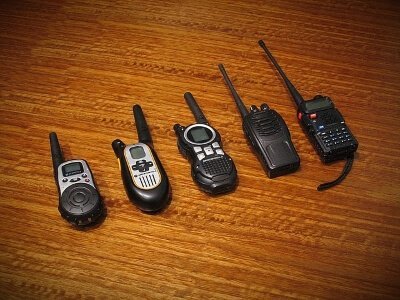
This goes for all walkie-talkies and radios; VHF and UHF radios obviously get much better range than FRS radios, but obstacles will still affect performance. And, they require a license to operate.
GPS Features
Besides the basic radio function, pay attention to what kind of features and tools the GPS includes; emergency beacons, locators, distress calls. These can all come in handy during an emergency, and every GPS radio for outdoor use should have at least one.
Some devices include useful tools for both navigation and scientific purposes, such as an accelerometer; a barometric altimeter for measuring elevation through atmospheric pressure (useful when trekking in mountainous terrain) and a compass for reliable, analog direction-finding always.
All these tools can go a long way in helping you navigate, adding some reliable tools to complement your downloaded maps and ensure you know everything about where you are and where you’re going.
Memory and Waypoints
The more memory your GPS contains, the more data you can store – and the more saved waypoints you can have. If you need to store more data, some models have a slot for a microSD or flash card.
Waterproofness
Hunting in the backcountry can put your gear through some challenging conditions, including rain, snow, dust and the occasional fall onto rocks. For that reason, you’ll likely want to look for a GPS radio rated for waterproofness and shock-resistance; they’re usually rated in terms of IP ratings. IPX7-rated devices are completely submersible down to 1 meter for as many as 30 minutes, for example, while IPX8-rated radios can be submerged even further. An IP6-rated radio would be rated for complete dustproofness.
We suggest looking for one at least IP67-rated, which means it is completely dustproof and particle-resistant, as well as completely submersible down to 3 feet.
Final Thoughts
Our Top Pick for the Best Hunting Radio is the Garmin Rino 750. It’s the most expensive on our list, but clearly the best, with FRS/GMRS radio, an extended range up to 20 miles in good conditions, tons of built-in features like a compass, barometer, accelerometer, GPS, GLONASS, over 100k preloaded TOPO Maps, and a touchscreen display. The touchscreen display is old, slow and buggy, but the Rino 750 is a beast of a Radio GPS combo and will do anything you ask it to.
If you’d like to save a few bucks, we suggest the Standard Horizon HX870 as our follow-up choice. It’s not as featured, and doesn’t have the best range, but is solid radio in a middle price point. And, it’s rated to IPX8 waterproofness, meaning it can hold up to some wet weather and accidental spills while out on the hunt.

